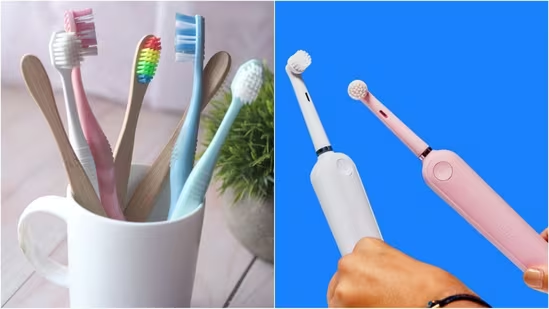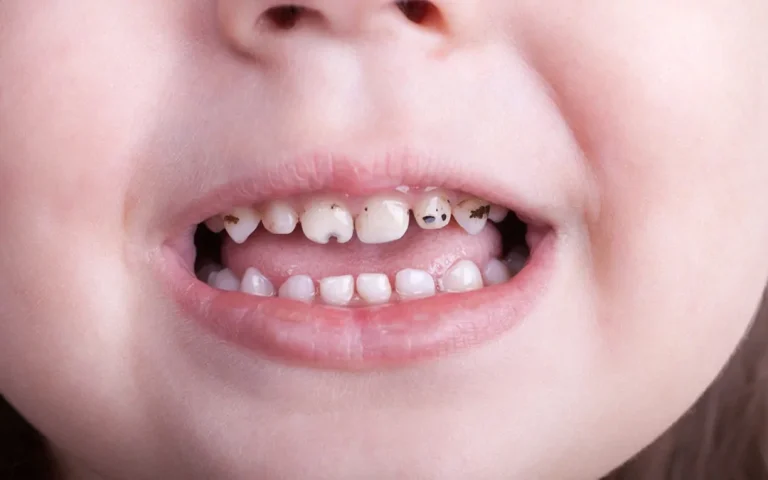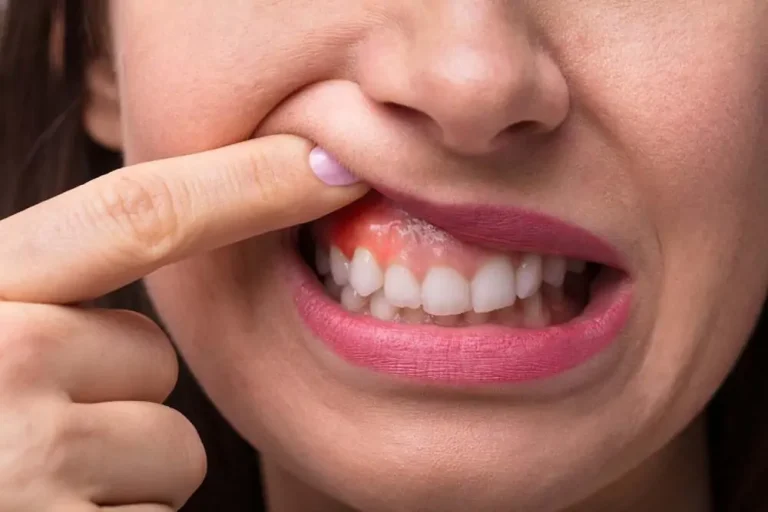The Ultimate Guide to Choosing the Right Toothbrush: Manual vs. Electric
Let’s be real—choosing the right toothbrush can feel like staring at a wall of options at the store and thinking, “How hard can it be to pick one?” But here’s the thing: your toothbrush is your first line of defense against cavities, gum disease, and those dreaded dentist lectures. With so many choices out there—manual, electric, soft bristles, hard bristles, fancy timers, and more—it’s easy to feel overwhelmed.
That’s where this guide comes in. Whether you’re team manual or team electric, we’re breaking down everything you need to know to pick the best toothbrush for your dental health. Because let’s face it, your smile deserves the VIP treatment. So, grab a coffee, get comfy, and let’s dive into the ultimate showdown: manual vs. electric toothbrushes. By the end of this, you’ll be armed with all the info you need to make a choice that’ll have your dentist giving you a gold star at your next checkup.
And hey, if you’ve ever wondered, “Is an electric toothbrush really worth the hype?” or “What’s the best toothbrush for sensitive teeth?”—you’re in the right place. Let’s get brushing!
1. Manual Toothbrushes: The Classic Choice
Ah, the good ol’ manual toothbrush. It’s been around forever, and for good reason—it’s simple, affordable, and gets the job done. But is it the right choice for you? Let’s weigh the pros and cons.
Pros of Manual Toothbrushes
- Budget-Friendly: Let’s start with the obvious—manual toothbrushes are easy on the wallet. You can snag a decent one for just a few bucks, and no need to worry about batteries or chargers.
- Portability: Heading out of town? A manual toothbrush is your travel buddy. It’s lightweight, doesn’t take up much space, and you don’t have to stress about forgetting a charger.
- Simplicity: No buttons, no settings, no learning curve. Just you, your brush, and your toothpaste. It’s straightforward and hassle-free.
Cons of Manual Toothbrushes
- Technique Matters: Here’s the catch—manual toothbrushes rely heavily on your brushing technique. If you’re not brushing for the full two minutes or hitting all the right spots, you might not be getting the clean you think you are.
- Limited Features: Unlike their electric counterparts, manual brushes don’t come with built-in timers or pressure sensors. It’s all on you to make sure you’re brushing effectively.
The Bottom Line
Manual toothbrushes are a solid choice if you’re on a budget, love simplicity, or just prefer the classic approach. But if you’re someone who struggles with brushing technique or wants a little extra help keeping your teeth in tip-top shape, you might want to consider upgrading.
Still, there’s something satisfying about the good old manual brush—it’s like the comfort food of dental care. But if you’re curious about what the electric side has to offer, keep reading. Trust me, it’s not just a fancy gimmick!
2. Electric Toothbrushes: The High-Tech Option
Alright, let’s talk about the flashy cousin of the toothbrush world—the electric toothbrush. These gadgets have been gaining serious popularity, and for good reason. But are they really worth the hype? Let’s break it down.
Pros of Electric Toothbrushes
- Superior Plaque Removal: Studies show that electric toothbrushes can remove more plaque than manual ones, thanks to their oscillating or sonic technology. It’s like having a mini power washer for your teeth!
- Built-In Timers: Ever wonder if you’re brushing long enough? Most electric toothbrushes come with a two-minute timer (some even buzz every 30 seconds to remind you to switch quadrants). No more guessing games!
- Easier to Use: If you struggle with brushing technique, an electric toothbrush can be a game-changer. The brush does most of the work, so you just need to guide it along your teeth and gums.
- Pressure Sensors: Some models have sensors that alert you if you’re brushing too hard—a lifesaver for anyone who tends to go a little overboard and risk damaging their gums.
Cons of Electric Toothbrushes
- Higher Cost: Let’s be real—electric toothbrushes are an investment. The initial price tag can be steep, and you’ll need to replace the brush heads regularly, which adds up over time.
- Maintenance: Unlike manual brushes, electric ones need to be charged or have their batteries replaced. Forgetting to charge it can leave you scrambling for a backup.
- Bulkier Design: If you’re a frequent traveler, the extra bulk of an electric toothbrush (and its charger) might not be ideal for your toiletry bag.
The Bottom Line
Electric toothbrushes are like the Swiss Army knives of oral care—packed with features designed to make your life easier and your teeth cleaner. They’re especially great for people with braces, gum issues, or anyone who wants a little extra help maintaining their oral health.
But hey, they’re not for everyone. If you’re happy with your manual brush and your dentist gives you a thumbs-up, there’s no need to fix what isn’t broken. Still, if you’re curious about stepping up your brushing game, an electric toothbrush might just be the upgrade you didn’t know you needed.
Up next, we’ll dive into the nitty-gritty of what to look for when choosing a toothbrush—whether it’s manual or electric. Trust me, it’s not just about picking the prettiest one on the shelf!
3. Key Features to Consider When Choosing a Toothbrush
Alright, so you’re ready to pick a toothbrush—manual or electric. But before you grab the first one you see, let’s talk about the features that really matter. Because let’s be honest, not all toothbrushes are created equal. Here’s what to keep in mind to find the perfect match for your pearly whites.
Bristle Type: Soft, Medium, or Hard?
- Soft Bristles: Dentists almost always recommend soft bristles. They’re gentle on your gums and enamel but still effective at cleaning. If you have sensitive teeth or gums, this is the way to go.
- Medium or Hard Bristles: These might seem like they’d clean better, but they can actually be too abrasive, leading to gum recession or enamel wear. Unless your dentist specifically recommends them, stick with soft.
Head Size and Shape
- Compact Heads: Smaller brush heads are better for reaching tight spaces, especially if you have a smaller mouth or crowded teeth.
- Angled or Tapered Heads: Some toothbrushes have angled bristles or tapered heads designed to clean hard-to-reach areas like the back molars.
Handle Design
- Comfortable Grip: Look for a handle that feels good in your hand. Non-slip grips are a bonus, especially if your hands are wet or you have arthritis.
- Flexible Necks: Some manual toothbrushes have flexible necks that adjust to the pressure you apply, which can help protect your gums.
Special Features (For Electric Toothbrushes)
- Brushing Modes: Many electric toothbrushes come with multiple modes, like sensitive, whitening, or gum care. If you have specific dental needs, these can be a game-changer.
- Pressure Sensors: As mentioned earlier, these alert you if you’re brushing too hard—great for preventing gum damage.
- Interchangeable Heads: Some electric models allow you to switch between different brush heads for specific needs, like orthodontic care or tongue cleaning.
The Bottom Line
Choosing the right toothbrush isn’t just about picking the first one you see. It’s about finding one that fits your mouth, your needs, and your lifestyle. Whether you go manual or electric, paying attention to these features can make a big difference in your oral health.
Up next, we’ll explore which toothbrush type is best for specific dental needs. Spoiler alert: it’s not one-size-fits-all!
4. Which Toothbrush is Best for Your Dental Needs?
Let’s get real—your dental needs are as unique as your smile. Whether you’re dealing with sensitive teeth, braces, or just want to keep your gums healthy, the right toothbrush can make all the difference. Here’s a breakdown of which type of toothbrush works best for common dental concerns.
For Sensitive Teeth and Gums
- Best Option: Soft-bristled manual toothbrush or an electric toothbrush with a sensitive mode.
- Why It Works: Soft bristles are gentle on enamel and gums, while electric brushes with sensitive modes reduce vibration intensity for a more comfortable clean.
- Pro Tip: Avoid brushing too hard—let the bristles do the work!
For Braces or Orthodontic Work
- Best Option: Electric toothbrush with an orthodontic brush head or a manual toothbrush designed for braces.
- Why It Works: Electric brushes can easily clean around brackets and wires, while manual brushes with V-shaped bristles are designed to navigate the nooks and crannies of braces.
- Pro Tip: Consider a water flosser for an extra-thorough clean!
For Gum Health
- Best Option: Electric toothbrush with a gum care mode or a manual toothbrush with extra-soft bristles.
- Why It Works: Electric brushes with gum care modes often have gentle vibrations to stimulate blood flow, while manual brushes with soft bristles prevent irritation.
- Pro Tip: Don’t forget to floss daily to keep your gums in top shape.
For Whitening and Stain Removal
- Best Option: Electric toothbrush with a whitening mode or a manual toothbrush with polishing bristles.
- Why It Works: Electric brushes with whitening modes often have higher vibrations to remove surface stains, while polishing bristles on manual brushes can help buff away discoloration.
- Pro Tip: Pair your brushing routine with a whitening toothpaste for best results.
For Kids
- Best Option: Manual toothbrush with a small head and soft bristles or a kid-friendly electric toothbrush.
- Why It Works: Smaller heads fit little mouths better, and electric brushes with fun designs or timers can make brushing more enjoyable for kids.
- Pro Tip: Let your kiddo pick their own toothbrush—it’ll make them more excited to use it!
The Bottom Line
Your toothbrush should work for you, not against you. By matching your brush to your specific needs, you’ll not only improve your oral health but also make your daily routine a whole lot easier.
Next up, let’s talk about how to keep your toothbrush in tip-top shape—because even the best brush won’t do its job if it’s not properly maintained. Stay tuned!
5. Maintenance and Replacement: Keeping Your Toothbrush in Top Shape
So, you’ve picked the perfect toothbrush—manual or electric. But here’s the thing: even the best toothbrush won’t do its job if it’s not properly maintained. Let’s talk about how to keep your brush in great condition and when it’s time to say goodbye and grab a new one.
How Often Should You Replace Your Toothbrush?
- Manual Toothbrushes: Replace every 3 months—or sooner if the bristles look frayed or worn out. Frayed bristles are about as effective as a comb with missing teeth (hint: not very).
- Electric Toothbrush Heads: Same rule applies—swap them out every 3 months or when the bristles start to show wear. Most electric brushes have color indicators on the bristles to let you know when it’s time for a change.
What Happens If You Don’t Replace It?
- Worn-out bristles can’t clean your teeth effectively, leaving plaque and bacteria behind.
- Old brushes can harbor germs and bacteria, which is pretty gross when you think about it.
Tips for Cleaning and Storing Your Toothbrush
- Rinse Thoroughly: After brushing, rinse your toothbrush under running water to remove toothpaste and debris.
- Store It Properly: Keep your toothbrush upright in a holder and let it air dry. Avoid covering it or storing it in a closed container—that’s a breeding ground for bacteria.
- Keep It Separate: If you share a bathroom, make sure your toothbrush doesn’t touch others. Cross-contamination is a real thing, and nobody wants that.
For Electric Toothbrush Users
- Clean the Handle: Wipe down the handle regularly with a damp cloth to remove toothpaste splatters and grime.
- Check the Charger: Keep the charging base clean and dry to avoid malfunctions.
- Replace Batteries: If your brush uses replaceable batteries, keep an eye on the power level so you’re not left with a dead brush mid-brushing session.
Fun Fact: Did you know the average person spends about 38 days of their life brushing their teeth? Make those minutes count with a well-maintained toothbrush!
The Bottom Line
Taking care of your toothbrush is just as important as brushing itself. A clean, well-maintained brush ensures you’re getting the most out of your oral care routine. And don’t forget—when in doubt, swap it out!
Now that you’re armed with all the info, it’s time to make a choice. Whether you go manual or electric, the right toothbrush can transform your brushing game and keep your smile shining bright.
Conclusion
Choosing the right toothbrush doesn’t have to be overwhelming. Whether you’re team manual or team electric, the best choice depends on your unique needs, preferences, and budget. From sensitive teeth to braces, there’s a perfect toothbrush out there for everyone.
Remember, your toothbrush is your partner in oral health, so treat it well and replace it regularly. And if you’re still unsure, don’t hesitate to ask your dentist for recommendations—they’re the ultimate toothbrush experts!
Ready to upgrade your brushing routine? Check out our top picks for the best manual and electric toothbrushes, and take the first step toward a healthier, happier smile today. Your teeth will thank you!
FAQs
What is the main difference between a manual and an electric toothbrush?
A: A manual toothbrush is powered by your hand movements, while an electric toothbrush uses a motor to vibrate or rotate the brush head.
Are electric toothbrushes more effective than manual toothbrushes?
A: Both can be effective if used correctly, but electric toothbrushes may offer advantages like built-in timers and more consistent cleaning action.
What are the benefits of using an electric toothbrush?
A: Benefits include: potentially better plaque removal, built-in timers for optimal brushing time, and easier use for people with limited mobility.
What are the benefits of using a manual toothbrush?
A: Manual toothbrushes are more affordable, readily available, and don’t require charging or batteries.
Can an electric toothbrush damage my gums?
A: Yes, if used improperly. Use a light touch and the correct brushing technique to avoid gum damage. Some electric toothbrushes have pressure sensors to help prevent this.
How long should I brush my teeth, regardless of the type of toothbrush?
A: You should brush for at least two minutes, twice a day.
Are there different types of electric toothbrush heads?
Yes, there are various types, including rotating, oscillating, and sonic. Each type offers a slightly different cleaning action.
How often should I replace my toothbrush or brush head?
Replace your toothbrush or electric toothbrush head every three months, or sooner if the bristles are frayed.
Is a manual or electric toothbrush better for people with braces?
A: Electric toothbrushes can be particularly helpful for cleaning around brackets and wires, but manual toothbrushes can also be effective with careful technique. Consult your orthodontist for personalized recommendations.
How do I choose the right toothbrush for my needs?
A: Consider your budget, oral health needs, and personal preferences. If you’re unsure, ask your dentist for advice.







